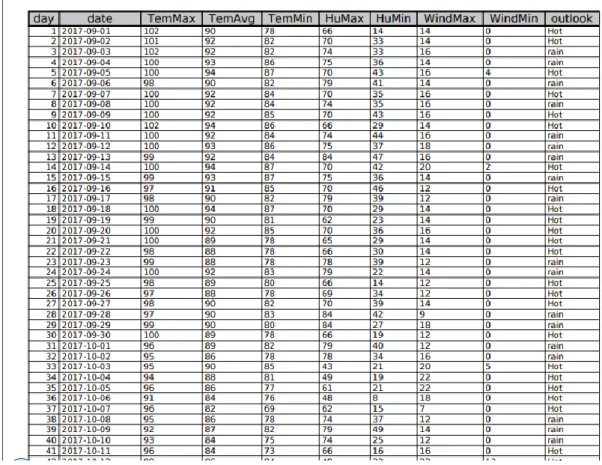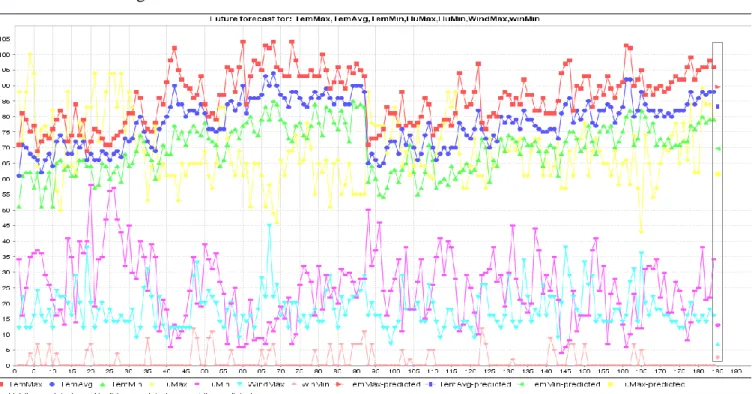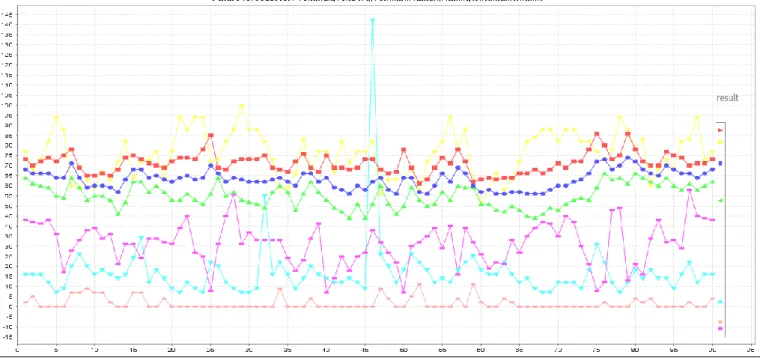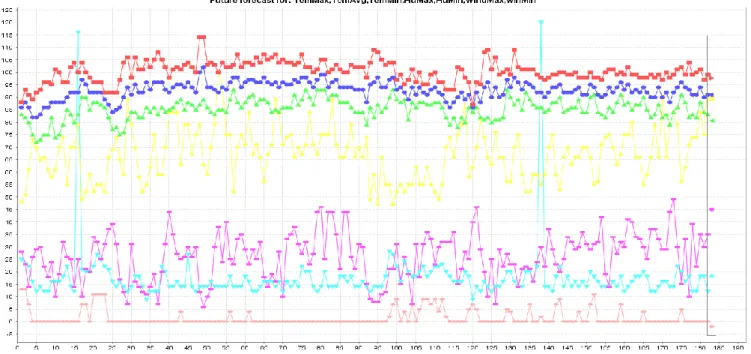This project/internship titled “Weather Forecasting Using Data Mining” submitted by Mehedi Hasan Sagor, ID no. and Tarikul Islam ID No., Department of Computer Science and Engineering, Daffodil International University was accepted as satisfactory due to partial fulfillment of requirements. for a B.Sc. Department of Computer Science and Engineering Faculty of Science and Information Technology Daffodil International University. Deep knowledge and great interest of our supervisor in the field of "data mining" to carry out this project.
Saiful Islam, and Head of CSE Department, for his kind help to complete our project and also to other faculty members and staff of CSE department of Daffodil International University. Weather forecasting is necessary to inform people and prepare them in advance for current and future weather conditions. After a comparison between the data mining algorithms and the corresponding collective technique used by this algorithm to increase the performance, a classifier (decision tree) is obtained that will be further used to predict the weather outcome.
Scientists have now realized that data mining can also be used in weather forecasting. It is defined as a raw set of information that can be used as keywords: Data Mining, Decision Tree, Ensemble Technique, Pre-Processing, Weather Prediction to extract meaningful information depending on the requirements of the application. The word data mining refers to the methods used to extract the necessary material from the given set of data that can be useful for statistical purposes or for making predictions by learning patterns in data and correlation between various parameters.
Data mining is now taken up by many fields like sports, banking, meteorological department, etc., and due to this, scientists, mathematicians and researchers have come up with a wide range of algorithms for finding solutions.
Motivation
Rationale of the Study
Research Questions
Expected Output
Report Layout
Is all about Introduction of our research
Is all about Research Methodology of the research
Is all about Experimental Results and Discussion of the research
In this chapter Summary, Conclusion, Recommendation and Implication for Future Study are described
Background
- Introduction
- Ancient forecasting method
- Modern methods
- Related Works
- Scope of the Problem
- Challenges
In the context of the climate forecast framework, there are numerous analysts who have attempted this using some data mining strategies. The successful forecasting research could not produce an unqualified and constant weather model for the difficult weather data systems. Using a powerful supercomputer, scientists now run a huge amount of global weather simulations.
For that reason, scientists ran 10,240 simulations through the model and the global environment, divided by 112 km sections. Many international organizations led by Takamasa Miyoshi of RIKEN Advanced Center for Computational Science (AICS) used the amazing supercomputer and highly developed radar monitoring data to correctly predict the occurrence of driving rains from the localized areas. We study many research articles, in them we get a lot of information about the weather forecasting system of the modern world.
In many research papers we have seen that they work Neural Networks approach for weather forecasting. The of use forecast analysis con not done for the complex data systems of the weather that definitive and constant model of the weather. Here a weather forecasting model is compiled in this article to predict the weather successfully.
Our model of weather data in the form of time series is careful and this data is transformed with information, where useful information is derived using the concepts of data mining techniques. A data mining system is used to discover hidden patterns and correlate them with various attributes that are associated with weather conditions. Now the data shows a series over a period of time and the weather forecast can be well considered using time series mining.
There are many forecasting systems on the market that lack features and a suitable interface. Finally, a bad forecasting system is harmful to people's wealth; with people's trust it became a drama. While working on this, we face many challenges that are too difficult to solve, but we are solving these challenges.
Research Methodology
- Introduction
- Research Subject and Instrumentation
- Materials and Methods
- Linear regression
- Decision tree
- Data Collection Procedure
- Data Collection
- Data Transformation
- Data Pre-processing
- Feature Extraction
- Statistical Analysis
- Linear regression
- Decision Tree
- Implementation Requirements
- Introduction
- Experimental Results
- Descriptive Analysis
- Summary
So at weka we get the outlook from decision tree and temperature, humidity, wind speed from linear regression analysis. Regression tries to find out the strength of the relationship between a dependent variable, usually denoted by Y, and a number of other changing variables known as independent variables. Here we use the paper which contains the steps which depend on data mining techniques, the steps follow all the steps.
Linear regression is used to predict temperature, humidity, wind speed from a given set of data. Here temperature, humidity, wind speed is a numeric value and outlook is a non-numeric value, so linear regression does not work on a non-numeric value. Here, the decision tree algorithm is used to find a tree for a given data set, which is developed in an information entropy system.
The decision tree to make the better prediction property that makes the simple partition set. Each penultimate pivot conveys the last attribute or several attributes to decide on an official choice of the issue in figure 3.4.2.1. After the execution correlation, the J48 calculation was decided for further use which included investigation of the heritage information about the climate.
The resampling channel was used for information pre-handling, except for the information pre-selection, the most extreme sadness from a sum of 8 parameters was rejected due to noise present in it which affected the accuracy of the system . After the performance comparison, the decision tree algorithm was chosen for further performance which involved studying the heritage data about the weather. For the high amount of character of the data trapped in the problems higher than explained.
Weather is the condition of the environment that indicates whether it is hot or cold, wet or dry, calm or stormy, and clear or cloudy. In this chapter, the results of the study are presented and discussed with reference to the purpose of the study, which is to determine weather forecasts. In this study, linear regression and decision tree models are designed to predict the weather attribute.
Then we use the decision tree on weka for each data set and we get the tree for each season. Here, the prediction we have made will be best if the weather remains in general flow.
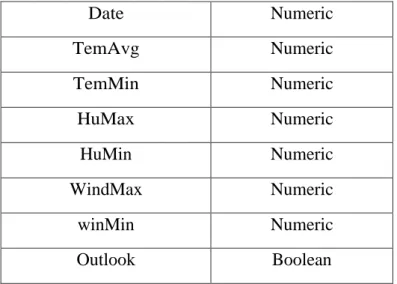
Summary, Conclusion, Recommendation and Implication for Future Research
- Summary of the Study
- Conclusions
- Recommendations
- Implication for Further Study
Here we made the prediction using historical data, but the weather on the ground changed day by day simultaneously. Here we use historical data and an algorithm, we will in future work with the system and develop it as much as we can. Based on the results of the research, we will make a system to predict the weather such as temperature, humidity, wind speed, outlook.
In the future, we will work with both software and hardware to get the better and real-time result.
APPENDIX Appendix A: Project Reflection
Appendix B: Related Issues
